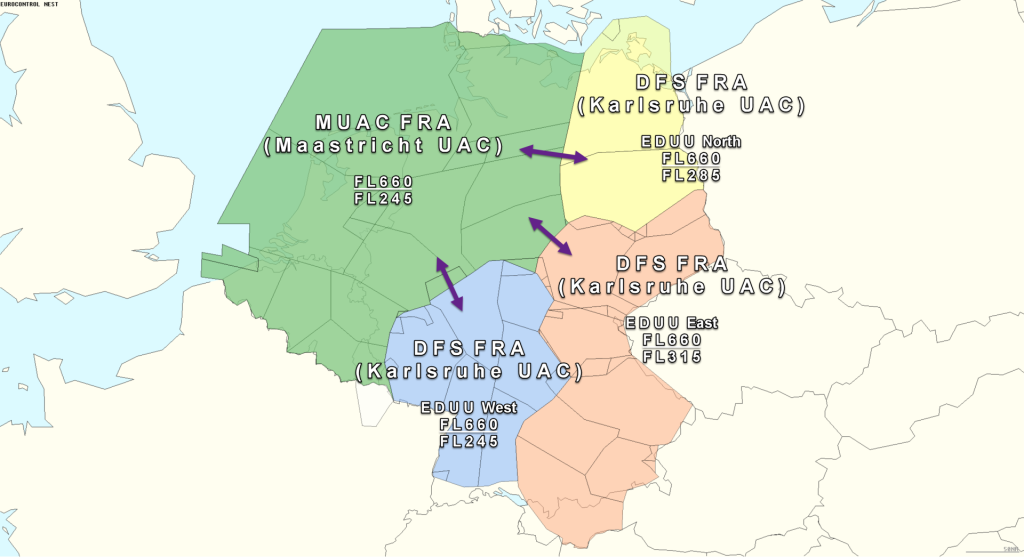Two main air navigation service providers in Europe have recently implemented a cross-borfer free route airspace policy, allowing for more direct paths to be taken by flights, thus reducing the impact of aviation on the environment, Eurocontrol (the European Organisation for the Safety of Air Navigation) has announced.
Since 30 November 2023, aircraft operators have been enjoying the benefits of H24 cross-border free route airspace operations in the upper airspace of Belgium, Luxembourg, the Netherlands and Germany. The implementation of cross-border free route airspace by Eurocontrol’s Maastricht Upper Area Control Centre (MUAC) and by DFS Deutsche Flugsicherung’s Karlsruhe Upper Area Control Centre (KUAC) – two of Europe’s major air navigation service providers – has unlocked thousands of new route options, irrespective of existing airspace boundaries. This will bring about significant optimised routings, fuel savings and a reduction in greenhouse gas emissions.
Cross-border free route airspace between the areas for which DFS and MUAC are each responsible is another key tenet of our common vision of excellence in air traffic management.
John Santurbano, Director of MUAC Eurocontrol

H24 free route airspace has been operational in MUAC airspace since 2019 and has been implemented gradually across the entire airspace of KUAC between 2018 and 2021. Cross-border free route airspace operations to/from the Copenhagen, Sweden, Switzerland and Vienna Flight Information Regions have already been implemented between 2019 and 2022. With this development, H24 cross-border free route airspace operations are now possible within and between the Benelux countries, Germany, Denmark, Sweden and Switzerland, and during night, also with Austria.
“The cross-border interconnections of the free route airspace over Belgium, Luxembourg, the Netherlands and Germany are another important step in a series of activities for a comprehensive free route airspace in the heart of Europe and for a more environmentally friendly air traffic”, said DFS COO, Dirk Mahns. “With the new route options, airlines have the possibility to realise flexible but at the same time reliable planning procedures.”
The objective of free route airspace is to allow airspace users to plan their routes more closely to their desired flight profiles in comparison with the published ATS routes and direct routes. This results in greater cost efficiency and reduces the impact of aviation on the environment by decreasing fuel burn and greenhouse gas emissions. Simultaneously, it allows the highest safety and capacity levels to be maintained or improved.
The new direct route options will further increase flight efficiency for most flights overflying Germany and the Benelux countries. Airspace users will be able to explore additional flight planning options, including long cross-border direct routes connecting the United Kingdom with Poland, for example, in one stretch without having to plan along intermediate points within MUAC/KUAC airspace. It will also be possible to use cross-border direct routes of different lengths to optimise flight trajectories according to wind patterns and to circumnavigate closed or congested airspace.













